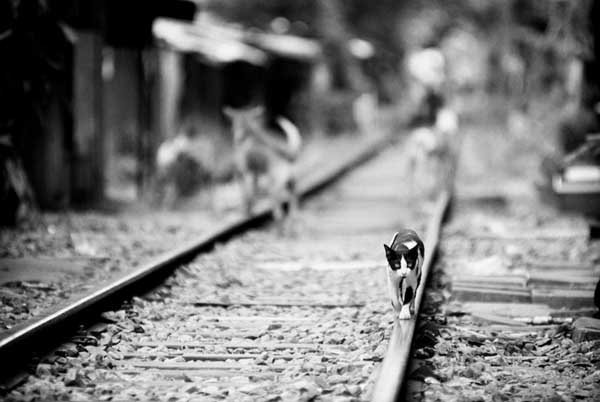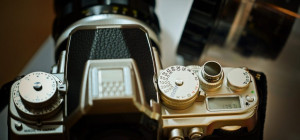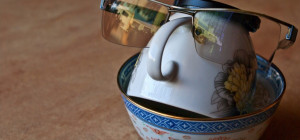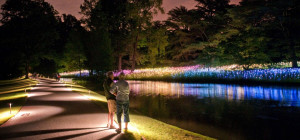Documentary photography refers to that form of photography which is used to "visually" narrate a significant and ingenuous event or occurring. It's a process of capturing an image of a particular subject or any historical event over a span of time. Documentation is always a unique and cohesive body of work. Documentary photography can be conducted using any personal or social event as the subject. Life and its myriad moments are showcased popularly through documentation.
Documentary photography is synonymous with the visual form of story-telling. The photographer tries to produce truthful, objective and mostly, candid photographs of the subject (people, event or a place).
When doing documentation, you have to be spontaneous in your style of photography. Being a documentary photographer, you need to be always geared up. You will have little to no control over timing, lighting and in fact, on the subject itself.
A quick ability to recognize and respond to various situations is an important feature of documentation. When it concerns the camera, photographers translate everything going on around them into a visual story.
Before you start off with documentary photography, the following tips will guide you through the process:
Choose and research your subject
Look for intriguing subjects. This turns out to be quite challenging while choosing the center of attraction for your documentary project. Your subject can be anyone-your own family member, neighbor or a close friend whose life and daily activities you want to narrate visually. A mental engagement with that person is essential. Ideas and subjects can come up from your surrounding environment, if you look closely. Iconic personalities from the society can also end up as your subject.
Regardless of how well you are familiar with your subject, spending quality time with them is important. Proper research on your subject and questioning them frequently on different real-life scenarios will help you determine how to place them in your composition when you actually start clicking.
Get inspired and choose a style
Once you know your subject, it's time to decide upon your style of shooting. The series of photographs which you plan to produce can be colored or black and white. As you go on clicking, check out other great visual stories and works of renowned documentary photographers. Your series must be thematic and coherent. The use of light to create a strong impact on the mood of your subject is vital. You can choose either of the lights:
- Natural light i.e. the available light
- Artificial light- pop-up flash, fill flash or light from other sources
Regarding the type of shots your series will have, try to incorporate the following shots:
- Long shots
- Wide angle shots
- Close-ups
- Establishing environmental shots
Get prepared
A minimalistic approach is the best way when you are doing documentary photography. If you are conducting a photo session in a private or office area, walk in without your camera and ask for permission before you start clicking. It is always best not to be intrusive. A kind and polite approach will serve your purpose.
As you are about to choose your gears, try to keep a note of the following:
- A wide-angle lens for wide shots
- A semi tele-photo lens to develop long shots
- A prime lens or a fixed focal length lens for close-ups and portraits
- A neutral density filter or a graduated filter to set proper exposure for certain environmental shots
- Extra battery packs
Keep post-processing simple
Truth and reality comprise the basics of documentary photography. Thoughtful framing and composition can add life your photos. Decisive moments will even add more to your series.
In fact, while post processing, the following edits need to be avoided:
- Cloning
- Blurring your photographs using blur tool
- Excessive dodging and burning
- Image manipulation
- Excessive sharpening of images
Presentation
The final, meaningful touch is all about how you present your body of work.
You can do either of the following when it comes to presentation:
- Compile a book
- An online slideshow presentation
- Put up an exhibition
Make your series cohesive and use meaningful and narrative photographs. Organizing the images in a pattern is crucial. The series must have a precise flow which will help the viewer to follow up with a story easily. Stick to photographs that will act as vital pieces of a puzzle.
Documentary photography is all about visually narrating the truth and reality of your subject. Establishing a strong relationship with your subject is a necessity and the one of the most important criteria. Asking your subjects to act and play will not make your visual story a chic and unique one. Even if you try to do so, it will reflect in your images. It needs to have that essence of sudden impromptus. Throughout the documentation work, your subject should be at ease and indulge themselves in conversations. You have to be vigilant and look out for defining moments.
Visual story-telling is tough but one of the greatest and most demanding genres of photography. If you are working within a limited time–frame, then use the time wisely. Patience and originality will help you create a great body of work.








![Peak District for Landscape Photographers [Infographic]](https://lerablog.org/wp-content/plugins/wp-thumbie/timthumb.php?src=http://lerablog.org/wp-content/uploads/2015/01/Peak-District-for-Landscape-Photographers-copy.jpg&w=300&h=140&zc=1)